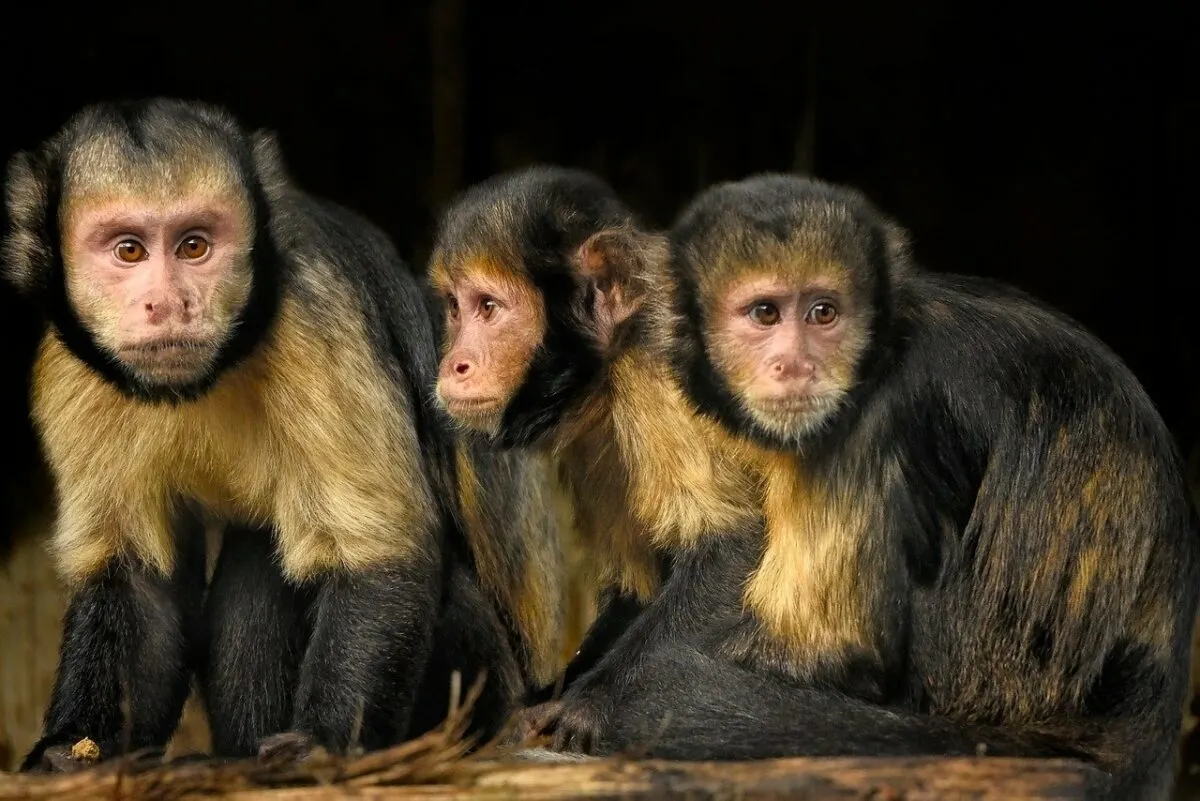Capuchin monkeys use many different tools to aid their survival, illustrating this cute monkey’s high intelligence.
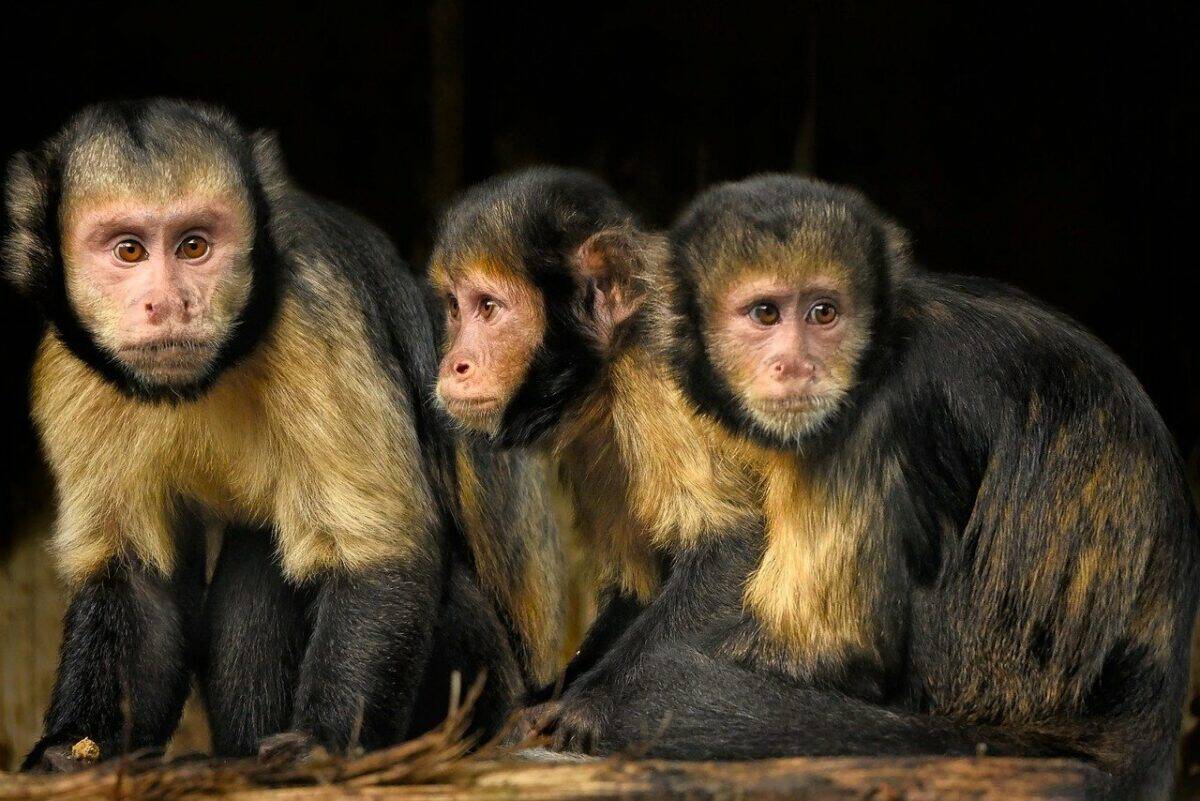
In lush rainforests, remarkable Capuchin monkeys live deep in Central and South America. Wildlife biologists, primatologists, and conservationists have studied these intelligent primates extensively for centuries due to their unique behavior – they are the only known primate species that regularly use tools to help them find food.
From long sticks that can be used as probes to stone hammers to crack open hard-shelled nuts, Capuchins utilize tools ingeniously — a trait rarely seen among non-human animals.
An Introduction to Capuchin Monkeys
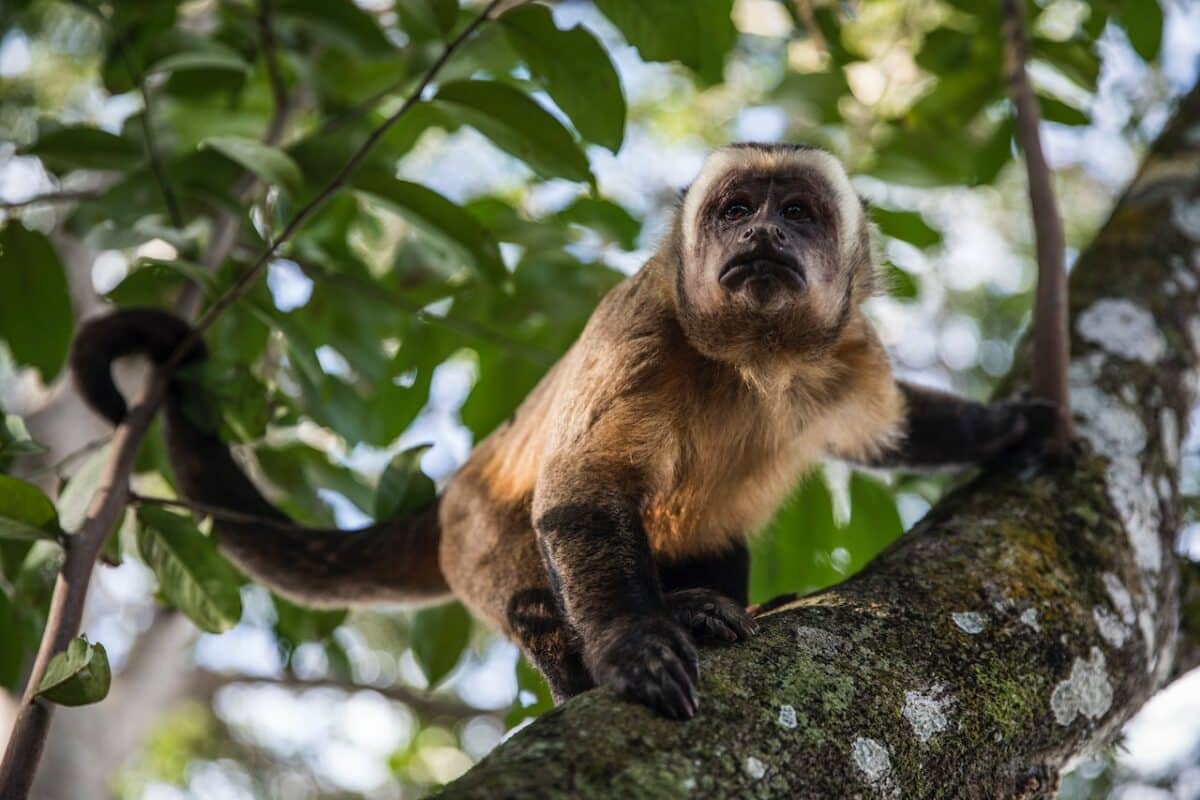
Capuchin monkeys are fascinating animals that have captured our attention for centuries. These intelligent primates have extremely dexterous hands, which they use to manipulate objects and construct elaborate tools.
Capuchin monkeys live primarily in Central and South America. Here, they inhabit various ecosystems, including tropical rainforests, dry deciduous forests, and savannas. Their flexible diet and ability to adapt to different environments have helped them to thrive in diverse locations. Despite their small size, capuchin monkeys significantly impact their ecosystems, influencing plant growth and seed dispersal.
Learn more about another not-so-adorable monkey, the Bondo Ape.
Tool Use in the Animal Kingdom
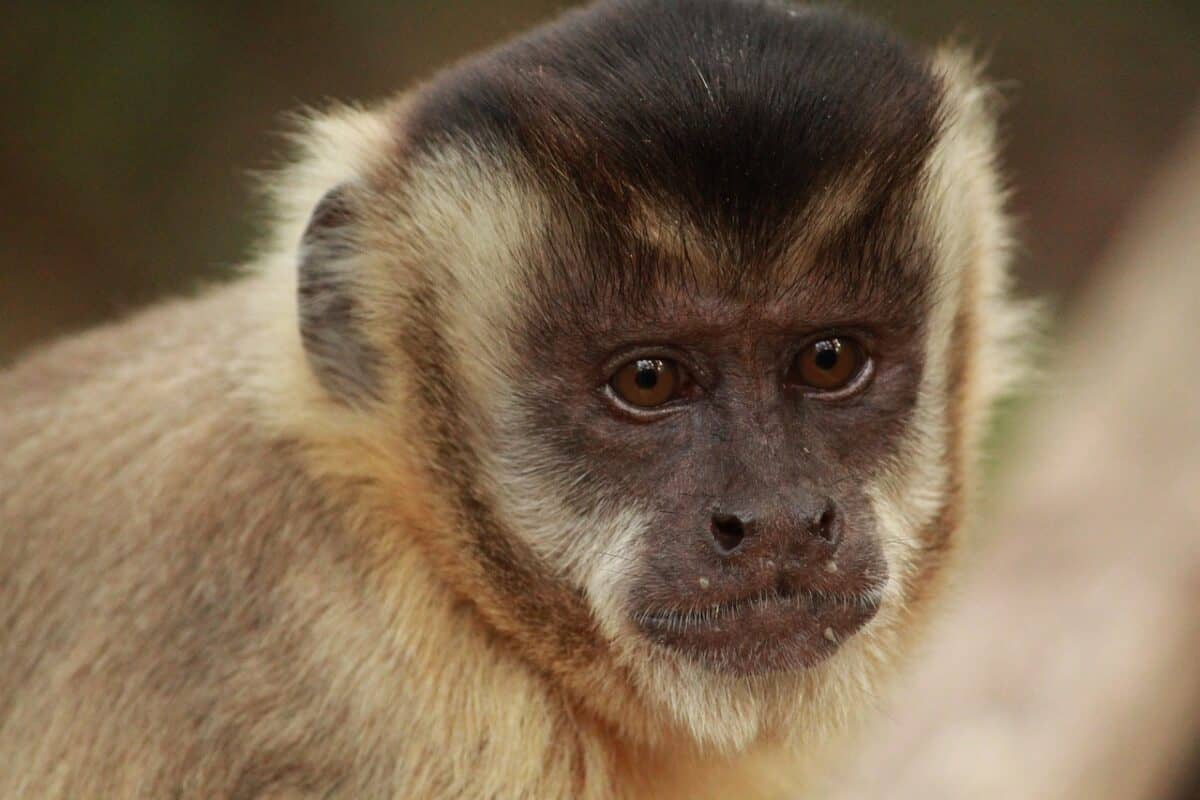
What has made the Capuchin monkey famous is their exceptional tool use in the wild. Unlike other primates, Capuchins use various tools to achieve their goals. They use sticks to dig for food, stones to crack open nuts, and even leaves to scoop water.
This sophisticated tool illustrates their intelligence and highlights the importance of adaptability in the wild. Capuchin monkeys need tools for survival and teach their young how to use them. It is remarkable to witness these primates’ resourcefulness and ability to find solutions to the challenges they face in their environment.
Types of Tools Used by Capuchin Monkeys
Capuchin monkeys can use various tools to procure food, navigate their environment, and even protect themselves. Some of the most common tools used by capuchin monkeys include sticks, leaves, rocks, and even their saliva. For example, they use sticks to probe tree holes for insects or to dig up tubers from the ground.
They also use leaves to fan themselves or to create a makeshift container to hold water. Rocks are used to crack open nuts or to defend themselves against predators. And finally, they use their saliva to soften tough food or as a kind of adhesive to glue leaves together for weaving nests.
Tool Use for Foraging and Food Processing
Capuchin monkeys are among the few primates that use tools for foraging and food processing. These resourceful primates show their skills by creating sophisticated tools to crack open nuts, extract insects from hiding spots, and retrieve food from inside crevices.
These tools are primarily made from objects in their environment, such as sticks, rocks, and even thorns. One example of these tools is using twigs to fish insects from tree bark. Interestingly, these monkeys frequently share their knowledge and skills of tool-making with their peers and the following generation, which aids in their survival.
Nut Cracking
Capuchin monkeys have impressive nut-cracking abilities. These primates have developed a highly complex technique involving rocks to access the nutritious food inside hard shells. To crack a nut, a capuchin monkey will hold it between its teeth and strike it against a hard surface, such as a rock or tree trunk. The monkey will repeat this process until the shell has broken open.
Capuchin monkeys often share their nut-cracking skills. Younger monkeys often watch older, experienced monkeys crack nuts and attempt the technique, demonstrating social learning and intelligence.
Cognitive Abilities and Brain Development in Capuchin Monkeys
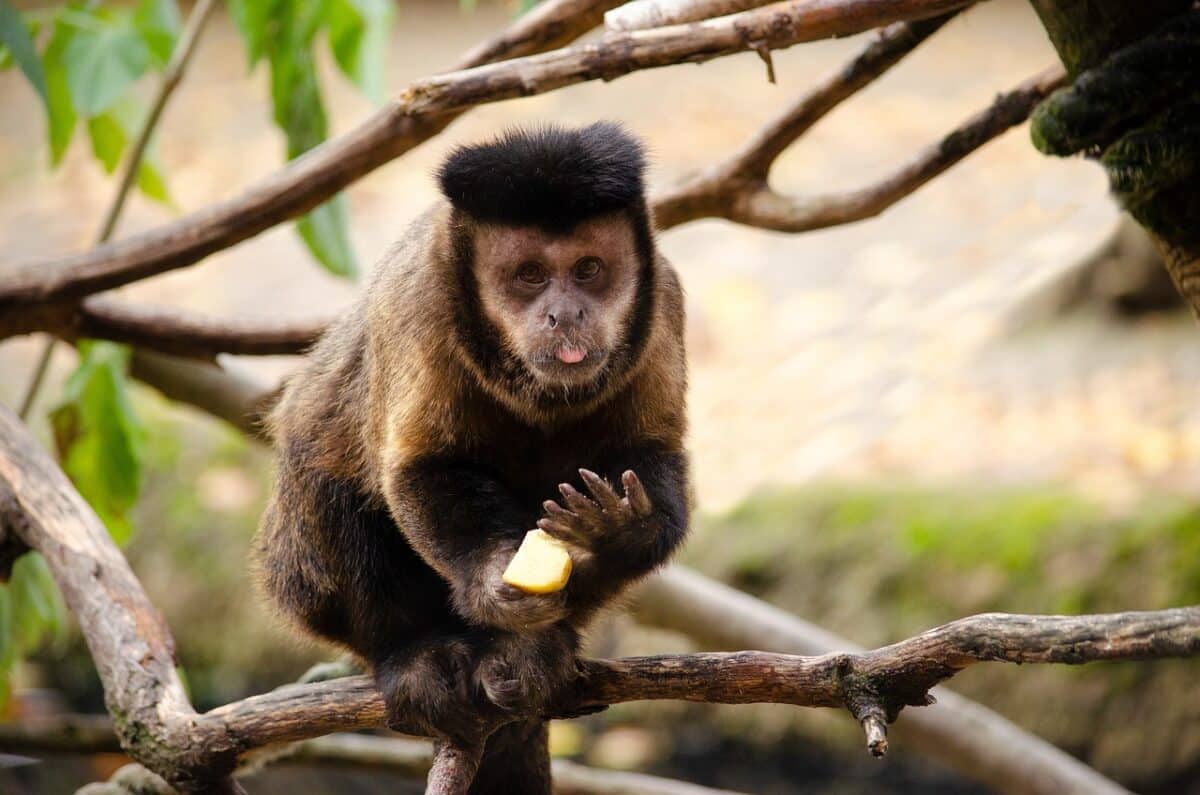
Capuchin monkeys are known for their intelligence, and researchers have been studying their cognitive abilities and brain development to better understand how these traits evolve in primates.
Recent studies show that capuchins can solve complex problems, use tools, and even communicate in ways thought to be unique to humans.
In terms of brain development, research shows that individual differences in the size and shape of the brain can significantly impact cognitive abilities. As such, researchers have been working to better understand the neural mechanisms underlying these abilities in hopes of shedding light on the evolution of the human brain.
Conservation and Threats to Capuchin Monkey Populations
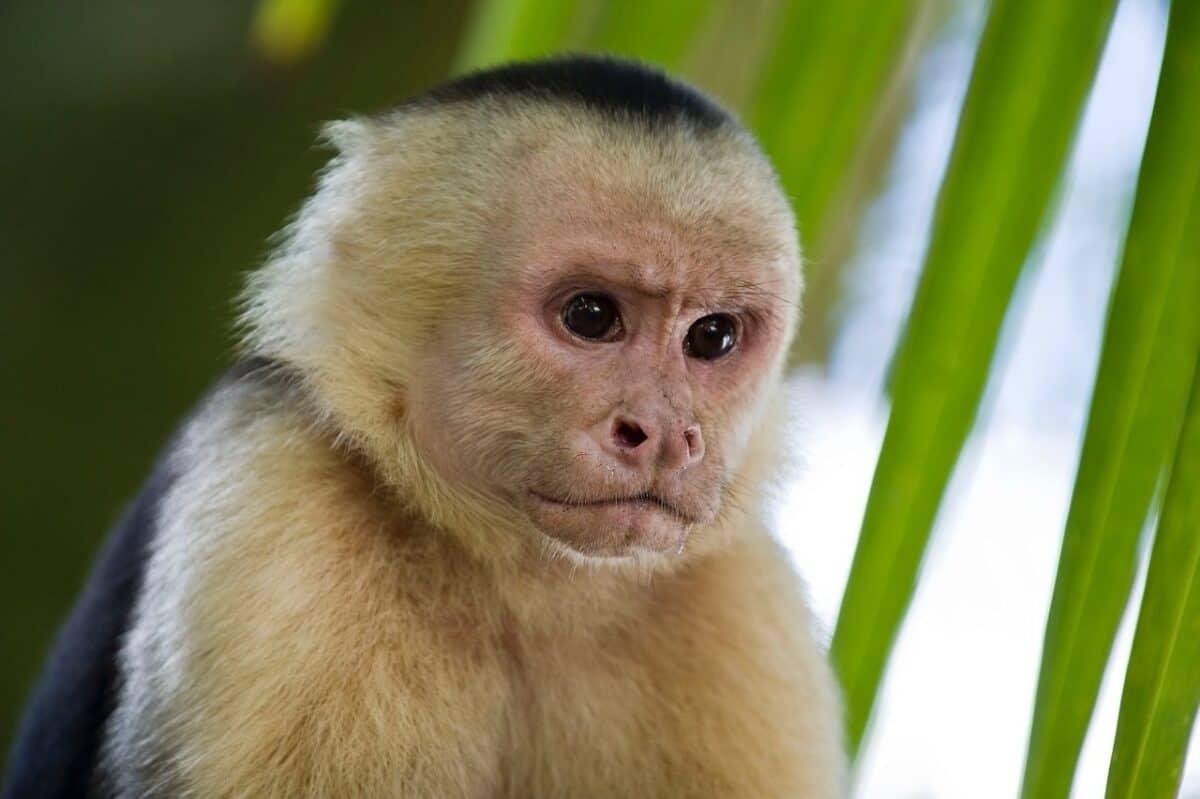
Capuchin monkeys are a fascinating species native to Central and South America. These intelligent primates are highly social and often work together to forage for food. Despite their intelligence, capuchin monkeys are facing numerous threats to their populations.
Habitat loss due to deforestation and fragmentation is a significant concern, as is hunting and capturing for the pet trade. Efforts are being made to conserve capuchin monkeys and their habitats, but it is a complex and ongoing challenge. Understanding these threats and working to address them is crucial for the survival of these incredible creatures.
In response, researchers and conservationists have been working tirelessly to protect and understand these animals. Through field studies, captive breeding programs, and educational outreach, scientists have gained valuable insights into capuchin monkeys’ behavior, ecology, and genetics. This knowledge has helped to inform conservation policies and strategies that aim to safeguard the future of these marvelous primates.
Another primate that is facing even more serious threats is the Hainan Gibbon.
Ethical Considerations in Studying and Observing Capuchin Monkeys
Researching Capuchin monkeys can provide valuable insights into their social behavior and intelligence. However, as with any animal study, there are important ethical considerations.
Ethical concerns may include how researchers obtain their subjects, treat them during the study, and release or care for them afterward. As such, stringent ethical guidelines are in place to ensure that studies are conducted ethically, with the welfare of the animals being a top priority. For instance, researchers are required to minimize the discomfort and stress experienced by the monkeys throughout the study period.
FAQs
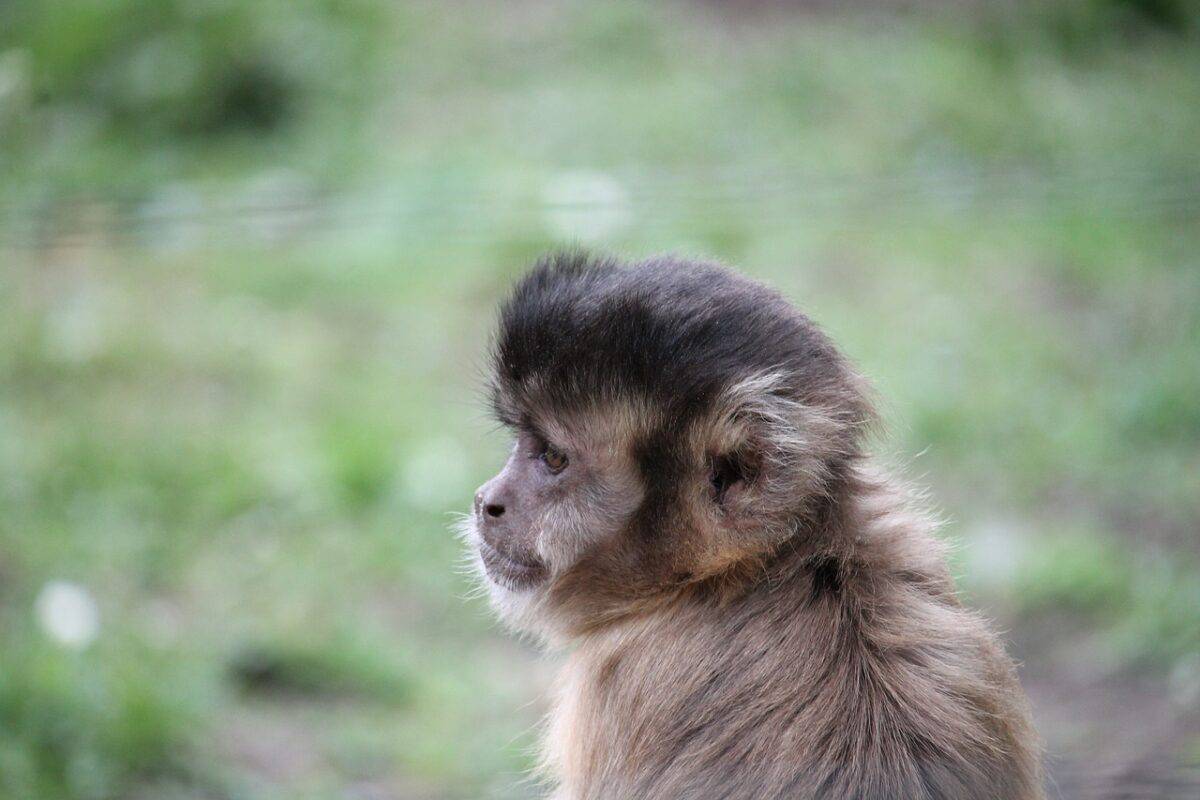
Capuchin monkeys can exhibit both friendly and aggressive behaviors, depending on the context and their individual personalities.
According to researchers, when given an onion, Capuchin monkeys will bite into it and rub it all over their bodies. It is thought that they do this because it acts as an insect repellant. Also, they often do this in groups, helping each other rub the onion on their skin.
Capuchin monkeys do not have the ability to speak like humans. They communicate through a range of vocalizations, body language, and facial expressions to convey information within their social groups.
Summing Up
Capuchin monkeys stand out as fascinating creatures in the animal kingdom due to their remarkable ability to use tools. These intelligent primates have demonstrated ingenuity and problem-solving skills that are both impressive and intriguing. Capuchin monkeys showcase their adaptability and resourcefulness in the dense rainforest environment they call home by utilizing various tools for foraging, food processing, and nut cracking.
The use of tools by Capuchin monkeys is a testament to their cognitive abilities and highlights their capacity for social learning and cultural transmission. Through observation and imitation, these primates pass down their tool-using techniques from generation to generation, showcasing the development of a unique culture within their social groups.
Thank you for reading this post! Keep expanding your knowledge about primates with us:
The Second Smallest Species of Primate
Join our Forum for free today!

- Signs Of Coyotes Visiting Your Property - July 23, 2024
- Beware Of The Rabid Wolf Spider In The United States - July 23, 2024
- 12 Flowers & The Beautiful Birds They’ll Attract To Your Yard - July 23, 2024

